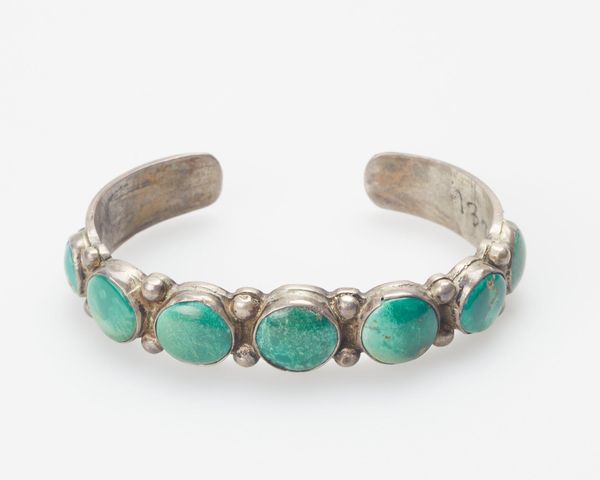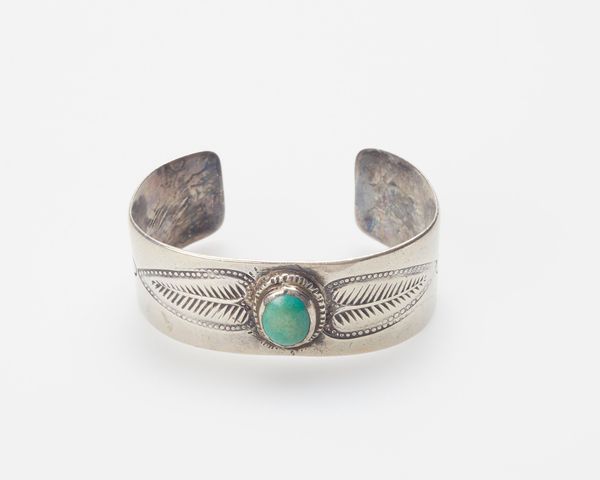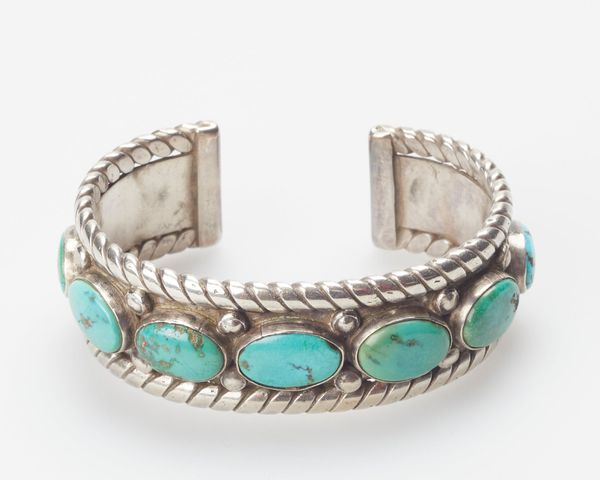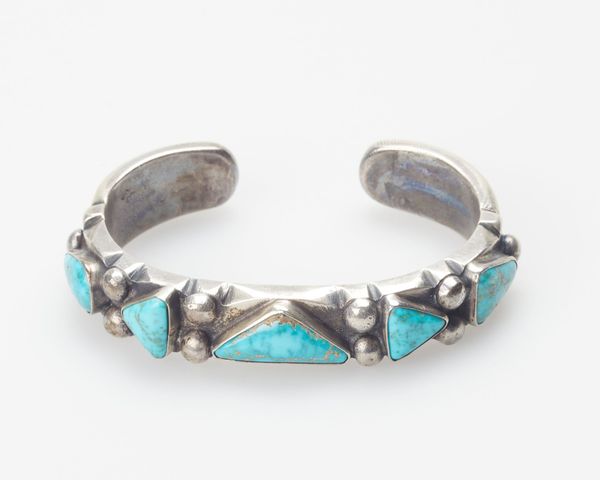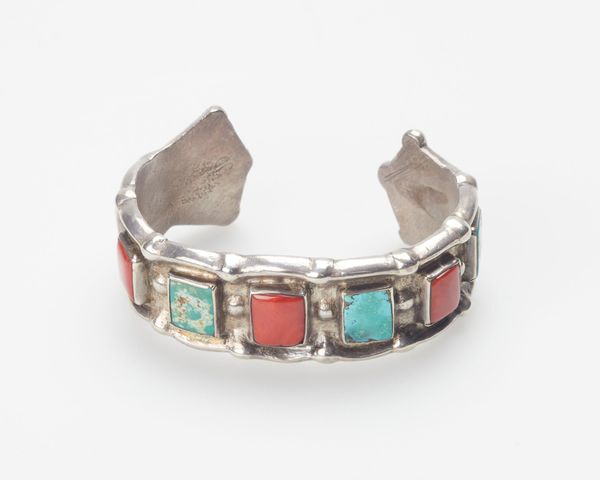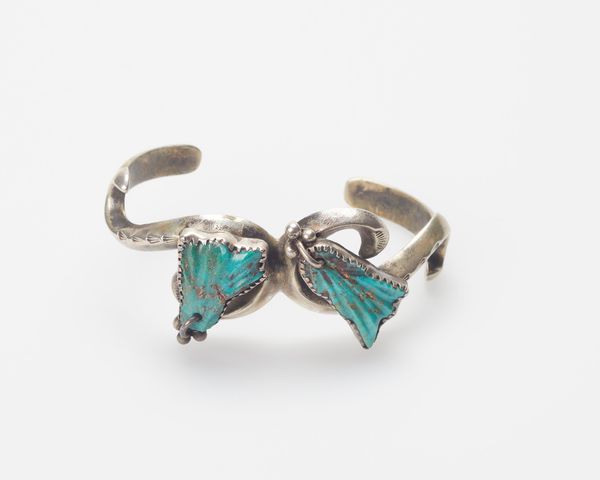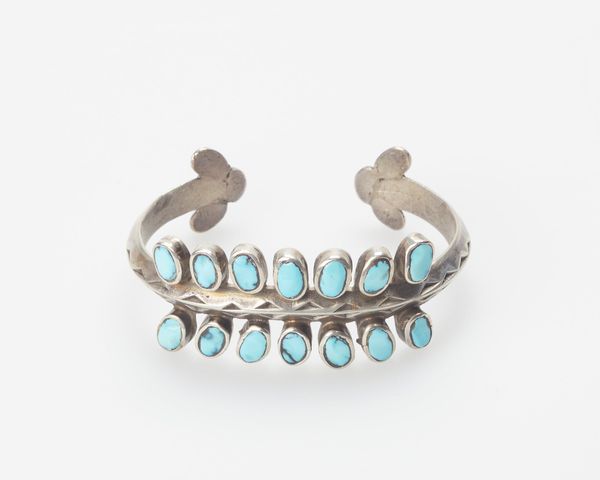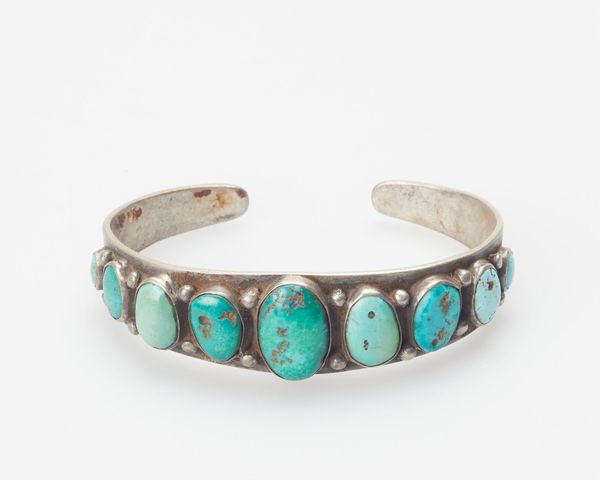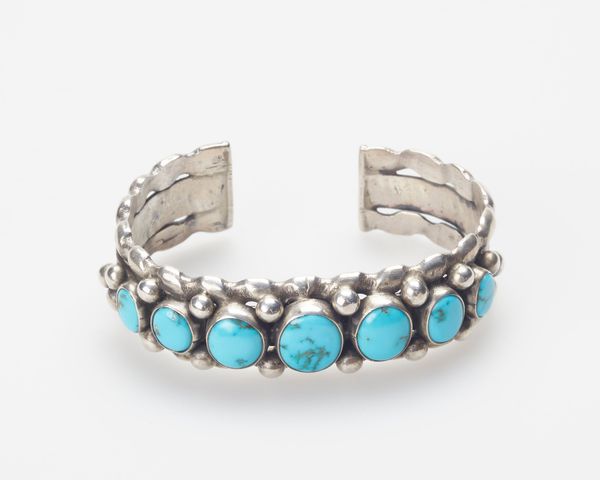
silver, metal
#
silver
#
metal
#
indigenous-americas
Dimensions: 2 1/2 x 5/16 in. (6.4 x 0.8 cm)
Copyright: Public Domain
Curator: Here we have a silver and turquoise bracelet crafted by a Navajo artist, sometime around the 1940s. It's a beautiful example of Native American artistry, currently held in the collection of the Minneapolis Institute of Art. Editor: The cool tones immediately strike me. The silver, though tarnished with age, and the blue-green turquoise stones lend it an aura of calm resilience, like water smoothing stone over decades. Curator: The choice of materials carries significance. Silver, introduced by European settlers, was quickly adopted and transformed into a key medium of artistic expression. Turquoise, of course, holds profound spiritual weight within many Native American cultures. This piece embodies a complex intersection of cultures. Editor: I see five turquoise stones, each set within a small, beaded silver bezel, nestled in the thicker metal. What is the deeper symbolic meaning, beyond simply ornamentation, especially concerning the number five? Is there something related to the four cardinal directions, perhaps combined with the self? Curator: That's insightful. Indigenous symbology is rich. With regards to bracelets created around the mid-20th century, consider this: The individual artisan would have been navigating immense socio-political pressures. Many were being forced into boarding schools designed to erase their cultural identities, even as their artistry became a source of economic survival in a market increasingly shaped by non-Native demands. Editor: So this bracelet could simultaneously be a symbol of cultural endurance and forced adaptation? Curator: Precisely. It invites us to consider issues of cultural appropriation, artistic agency, and the ways identity is negotiated and expressed under duress. Note, for example, the stamped designs flanking either side; arrows facing outward and upward in succession. Perhaps even an assertion of forward movement despite restraint. Editor: I also wonder about the mark left by the maker who crafted it and the individual who wore it. How was the bracelet passed from one person to another? I like to imagine the weight and warmth of the piece. Curator: Absolutely. This object is so much more than just ornamentation; it is evidence of persistence, and a testimony to the ability of artistic expression to transcend—and often cleverly subvert—oppressive forces. Editor: For me, thinking about its potential history allows us to look through it like a portal, not only reflecting the maker and the wearer, but entire communities over time.
Comments
No comments
Be the first to comment and join the conversation on the ultimate creative platform.
